Pimsleur Spanish Review (My Favorite Way to Learn Spanish)

The Pimsleur Method (developed by Dr. Paul Pimsleur) is popular among travelers, expats, and business people – and is my favorite way to learn Spanish.
When we first moved to Ecuador I was really struggling with learning the language. Some friends told us about the Pimsleur method, and I’m so happy they did!
I study the language in a number of ways: workbooks, computer programs, vocab study… and while they all help me progress with the language, I’ve experienced the most benefit from the Pimsleur Spanish audio course.
If you just want to give it a test, get a 7-day trial for free. After that, there is a monthly subscription fee. But even if you subscribe for a whole year, it will cost less than a week class we took in Cuenca, Ecuador. But you probably won’t need it even half of that time.
In this review, I’ll cover the following:
- How Pimsleur Spanish teaches
- How I study with Pimsleur
- Why the Pimsleur method works
- How to get Pimsleurs for less
Why I Love Pimsleur Spanish
I really like the Pimsleur Spanish learning method because it starts off with basic conversations that are needed when learning a foreign language.
For example, greetings and basic conversation like:
- “hi my name is —“
- “what is your name?”
- “it’s nice to meet you,”
- “how are you feeling?”
Pimsleur gave me what I needed to actually start talking to people. I found that courses which teach vocab like “apple” and “house” are only good for building vocab.
That might sound like an obvious observation, but when we were getting started with language learning we felt so overwhelmed! We didn’t know where to start.
We tried so many different books and courses! So, when I didn’t know how to string those vocab words/verb conjugations together into a sentence, I couldn’t really apply what I was learning to have conversations. And because they didn’t really have any context, they were hard to remember.
When I started with the Pimsleur method, it did the trick because what I wanted most was to get started talking to people.
The vocab/verb conjugations included in the Pimsleur course are all presented in context within conversations, making it much easier to remember. I’ve found that a bit of vocab learning and Pimsleur practice is best, but when my time is really limited I choose Pimsleur for conversation learning.
The Pimsleur method has also been very helpful because the instructions are spoken in English, so I’m not confused about the conversations or what it is that I’m supposed to be learning.
More reading: Guide to The Best Way to Learn Spanish (Immersion, Books, Classes, Resources)
How I Study Pimsleur Spanish
We purchased Pimsleur with Audible which has made it super easy to multitask. At the end of the post, I explain how to save big on Pimsleurs with Audible – more than 76% less than the cd package.
I often listen to the courses on my phone or tablet while washing dishes or doing house cleaning. That may not sound like a big deal, but when you have a busy schedule (working part-time, volunteering, homeschooling, raising a family…) and are living in a foreign country immersed in the language – it is!
I also really like that the course uses native speakers. I’m confident that I’m learning the correct pronunciation.

Why The Pimsleur Method Works
Dr. Pimsleur did extensive research on language learning and retention.
The conversations in the course use a lot of repetition. After you hear a word you repeat it, then eventually you start repeating sentences and responding to questions. As the course goes along the vocab you learn is spoken again in future conversations ensuring that you remember it.
It’s recommended in the course that you only do one lesson per day. The lessons are 30 minutes each. This method works because it does not overwhelm you with too much information, it’s presented at a rate you can process and retain.
How to Save on Pimsleur Spanish
There are two primary ways to purchase this course. There is the traditional way and then there is the better, cheaper way.
- Direct from Pimsleurs: The course is available as pay as you go audio. Try a 7-day trial for free. And then it costs $15-20/month depending on your package. While you can still get hard copies, the digital format is the best for most people. And it is less expensive. The full 4 phases (120 thirty minute lessons) will cost $450 in MP3 format. Compare at $970 for CD’s.
- From Audible: This will cost less and it’s better. Audible is an application that runs on smartphones, tablets and computers. It remembers where you stopped listening and syncs your automatic bookmark across all of your devices. You can purchase directly from Audible if you become a member. You’ll get a free audiobook. And if you buy credits (the Audible currency) you can save even more. At the time of writing, it was less expensive to buy the full package from Audible than order CD’s or the MP3 package from direct from Pimsleurs.
Which way is best? When we bought Pimsleurs, we got it from Audible. Now Pimsleurs is offering the same audio format – and it’s a subscription instead of an outright purchase. We have all used this tool and Bryan and I continue to study with it.
UPDATE (April 8 2014): After writing this post we received an email from the people at Pimsleur explaining how they have improved the course. The email was as follows:
Hi Dena & Bryan,
Thank you so much for the wonderful article on Pimsleur!
I just wanted to mention two little details. If you purchase direct from Pimsleur, the MP3 course comes with a free app that runs on smartphones, tablets, and desktops. The app keeps track of your progress, displays the reading exercises, etc. If you purchase a 30-lesson course, you get a free eBook copy of Dr. Pimsleur’s celebrated book How to Learn a Foreign Language (a $10.99 value).
Lastly, the Spanish series is also available in interactive software format. This is our newest and greatest incarnation of the Pimsleur Spanish series. Same audio content, but it comes with visual tools to help you review the course content and enhance your learning.
I hope this helps and thanks again for taking the time to review our course!
Best,
Kelly
These look like really good improvements! Have you tried this yet? If so please tell us about it by adding to the comments below.
Learn Spanish on the Go: The Pimsleurs Concept (Video)
So here’s the concept: set aside the books and really learn Spanish.
It is true that books are important. But they offer limited value in pronunciation and flow of the language. With an audio program like Pimsleurs you can learn Spanish in just 30 minutes a day.
Or like in the video – learn it all in a really long road trip. 🙂

Of course, this isn’t the recommendation with an audio language program. I think my brain would fill up much before the 13 hours… but the concept (and the science behind it) is solid: learn Spanish by interactive listening.
Learn Spanish on the Go: Video
We find this commercial for the VW Passat (which can go 795 miles per tank) hilarious.
They go from not being able to say “gracias” to being completely fluent with attitude. Thanks to Jakob for sharing this video in his comment.
Have you tried the Pimsleur method? What did you think of it? Please share your thoughts with us in the comment section below.

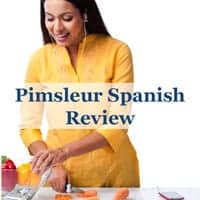

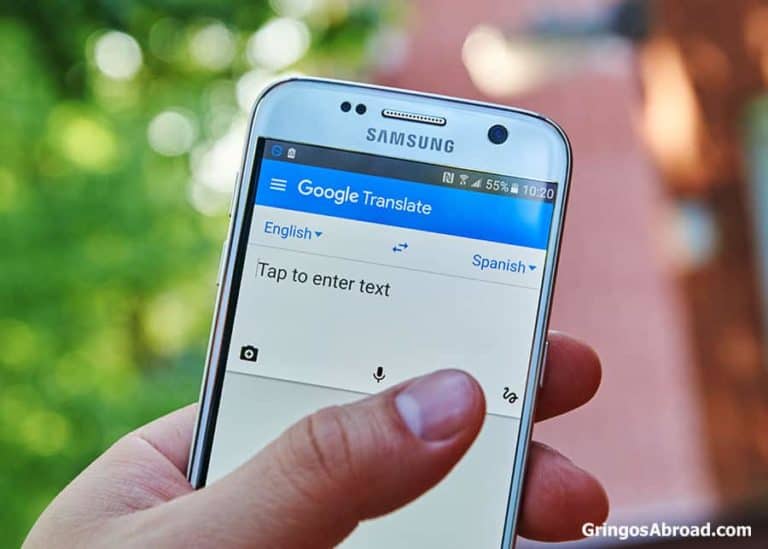
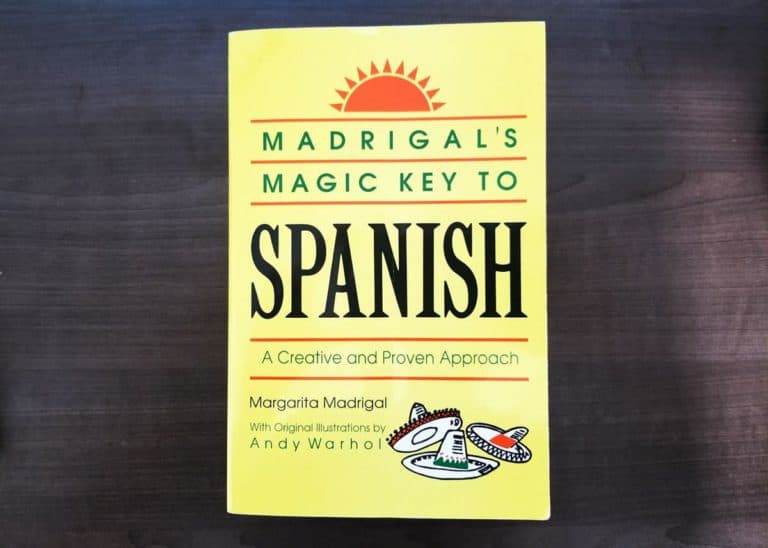
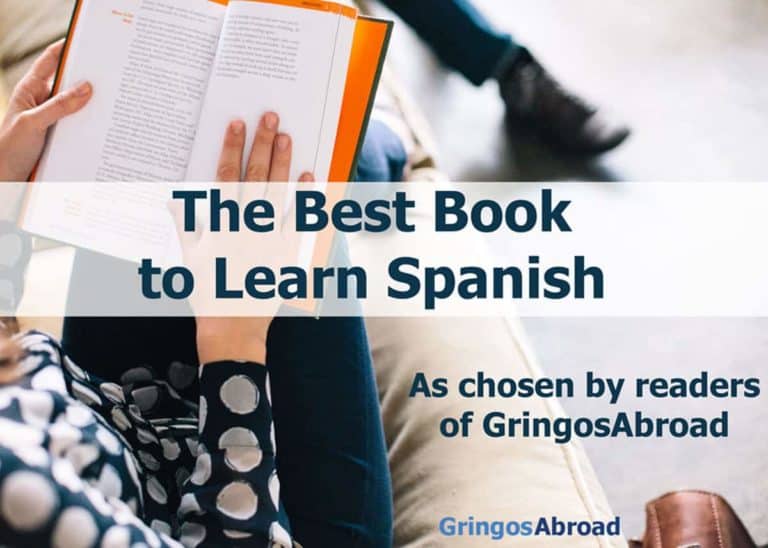
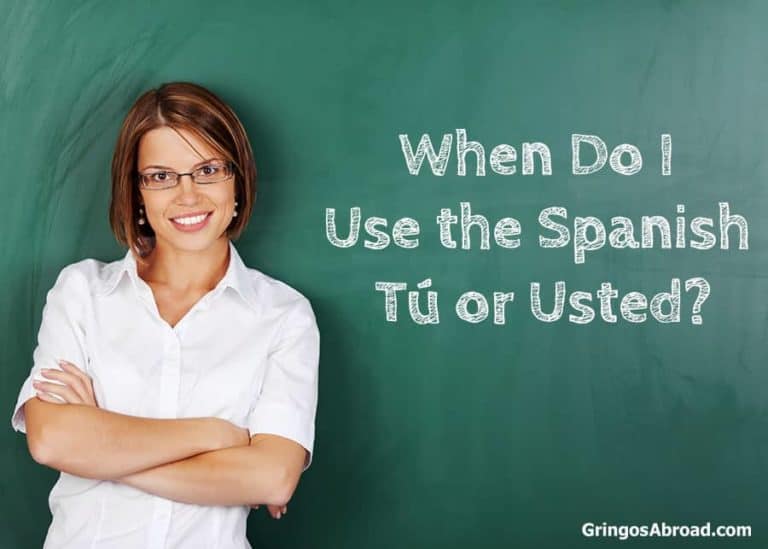
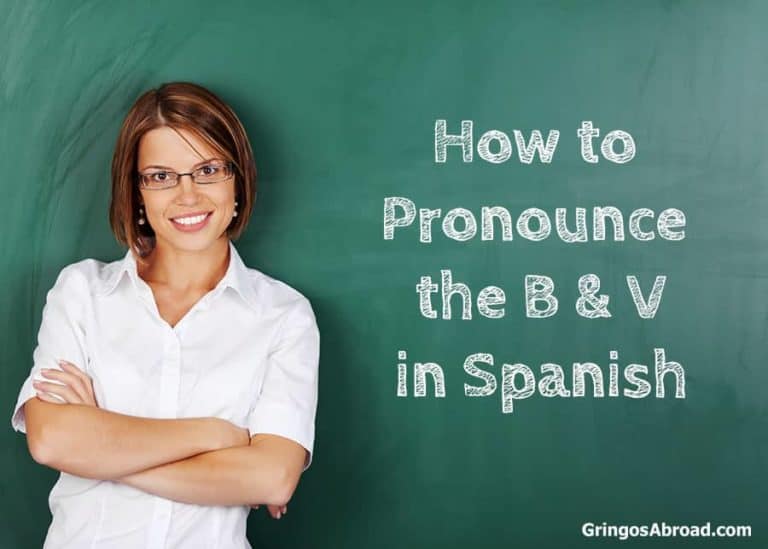
I’ve tried – unsuccessfully – to learn spanish for decades beginning with 2 years in school, Duo Lingo, Madrigal, Rocket, Learning Transfer, Berlitz and more. Some were free – a couple were rather pricey.
Finally I ran across Pimsleur Latin American Spanish (5 levels) and tried the monthly plan. This worked so well I quickly bought the lifetime plan. Here’s why:
1. It’s learn-by-speaking. My primary goal was/is to be an intermediate speaker who could get along spontaneously with local spanish speakers in Mexico City. To be able to speak and communicate well in everyday life here.
2. I found that endless grammar, conjugations, and academic reading and writing were counter productive.
3. Dr. Pimsleur established four techniques that work: anticipation, core vocabulary, context, and what amounts to spaced repetition. His method and courses are famous because they work.
4. The 5 levels of spanish will bring you to a good intermediate level of everyday spanish in about 5 or 6 months.
5. One caveat: Dr Pimsleur established about 7 essential guidelines for success. These are not suggestions, they are essential. For example it is key to study one lesson each day – about 30 minutes. No notes are to be taken, ever. It’s all about speaking – learning slowly and permanently as your active learning and use grow.
A truly great course – and I’ve tried them all. Adjuncts I’d recommend would be Madrigal’s Magic Spanish (later, to quickly learn about 3000 words that are the same or nearly so in English and Spanish), and Learning Transfer – free – like having a personal tutor, one on one.
Buen dia!
Wow, thank you very much for sharing such an interesting article. I am sure that this is very useful for those who dream of ideally learning Spanish. I hope that you will continue to share your experience and knowledge in learning foreign languages.
Thanks for the review! Does this program make you buy it separately for each user if my wife and I both want to learn?
Thanks Chad! If you buy via Audible – you can use your one license on multiple devices but you’ll have to use the same login. This is what we did and it worked great.
Val and I love Pimsleur in any language and we will be using it to learn Spanish. We had so much fun leaning Pimsleur Japanese and volunteering in the Japanese community. Now we are planning to go to Ecuador for at least a year, so Spanish is going to be our next project. We have one year to learn the language before we set off for Cuenca! Of course having lots of friends who speak Spanish and who want to help us learn will be a great benefit. I too love learning a new language while doing household chores Dena. Great time management! This is such a great blog Dena and Brian! I have learned so much just from the information that you provide and now I am just so full of excitement about moving there. Thank you so very much!
Deanie Hohn
Not to knock pemsleurs, because I have both Spanish 1 and 2. But I have found that the online app Fluencia is a much faster and better way for me to learn Spanish. It’ spree to try and costs a lot less.
I hope this is helpful to someone.
Thanks Thomas. Dena is also using Fluencia – to polish her Spanish.
Dena,
Can I ask a question about the Audible “24 books all at once” option you mention above? If you purchase this option do you lose access to the pimsleur courses after one year unless you purchase another membership?
Thank you.
All purchases on Audible are permanent – you will never lose access to them. You don’t have to be an active subscriber or ever buy anything again. This was something I was worried about at first – but I have purchases from more than 4 years ago on an inactive account – and there is no problem to download them on a new device.
Thanks a lot Bryan, that’s exactly what I was wondering about. I think it’s time for me to get an audible subscription.
I love Pimsleur; I first used it to learn Spanish thanks to my mom and dad, and now I’m using it to learn Mandarin Chinese! It is a great tool – sure to help.
I was initially introduced to Pimsleur when I was learning Italian for a trip 20 years ago. It was clear to me how well it works to create neural pathways in the brain when I started to learn Spanish. I could still recall how to say things in italian when I hadn’t spoken it for 20 years! I have been through most of the lessons by now, and love to review, because all of a sudden a “light bulb” will go on, and I’ll say, “Aha! That’s why I’ve been hearing things said that way!” Since we live in Ecuador now, our local friends comment all the time on how quickly we’ve learned the language. Pimsleur was a very useful tool to learn, as well as using Spanish every day, even if one feels that they sounds like a 2-yr-old. We all have to start somewhere, right?
I’ve used pimsler a couple of times, but now I’m getting serious, because I plan to move soon! I love the way they teach, if I don’t pick it up after one time through, I listen till it is easy. The best I’ve had! Functional Spanish so quick!
Timing is everything. I got Pimsleur Spanish two days ago. I took to heart your recommendation to learn the language. It is reassuring to know this is the best method. My move is three to five years off, but “Be Prepared”. Thank you for sharing wisdom and insight. It is more of a blessing than you know. Cheers.
Thank you, this is such a helpful overview. I’m planning on moving about three years from now, but of course want to start on the Spanish (building on a foundation I already have). Good to read your step by step details!
If you’re still Stateside, you’ll find that many public libraries carry the Pimsleur series…a good way to try the program out and see if it’s right for you before spending the big bucks. I was employed in a service job and spent half my day driving from one service call to another. The “classroom in the car” made me actually look forward to traffic congestion as an opportunity for more Spanish practice!
I absolutely loved the series, but disappointed it is not an ongoing program. There’s so much to learn…at least enough for a part 5 and 6. Anyone have suggestions as to a similar course to use as a follow-on to Pimsleur?
I’m not sure how much overlap there is, but there is the FSI (Foreign Services Institute) Spanish course, which was a Pimsleur-like audio program developed in the 60s or somewhere thereabouts. You can find all the audio for free online, just don’t expect the greatest sound quality. You can even print out the text for the conversations. It covers a lot of practical situations.
I absolutely love my Pimsleur lessons. I-pod in my ears. I drive a lot for work. Good use of time. Native Spanish speakers have no problem at all with the accent the lessons convey. It’s been praised actually. I garnered mine through ebay on CD. As the demographics in the states change, it has made my work much easier.
I actually started using Pimsleur Portuguese on my Kindle Fire following your mention to fill dead time, like driving for example. I absolutely love it. It is excellent for giving me time back that otherwise would have been lost. With my knowledge of Spanish the sounds immediately fall into place as the two languages are very comparable. I am sure if you speak Portuguese it works the other way around just as well. It is excellent for that “delta” approach where you try to catch differences to a language you already speak. I feel like I am learning a new language without compromising my other activities which is a huge bonus.
I know! I love that I can do Pimsleur while doing other things, it’s a huge help.
Thanks for your comment Jakob
I just saw a funny VW commercial that beautifully demonstrates this. Have a laugh!
youtube.com/watch?v=c3pDGGvWD3oUPDATE: This video was deleted – here is the new link http://youtu.be/5oOVqUInA6w
Greetings from Texas.
We love it! I think we’ve watched it ten times… We are going to share this in a post tomorrow.
Thanks!
Hey Jakob – we just published this video in a new post: Learn Spanish on the Go: The Pimsleurs Concept (Video).
The original video was deleted, so we are sharing the same video from a different channel.
Hey folks, I bought the Pimsleur Method last year at the end of July. I do one lesson every day and I mean everyday including holidays and weekends. It’s a great course and I am slowly but surely building my comprehension. I am now on Phase Three of the Five Phase Spanish course. Some lessons are harder than others but they are all doable if you persevere and have a specific goal. My goal is to go to Ecuador see the country and do volunteer work during the lousy winters we have up here in Canada. So, the lessons. Do every day as I said. I usually spend two hours per day on each lesson. One hour in la manana and one hour in la noche. Some lessons require three days i.e. six hours on the same lesson to get good comprehension. Anyway, there you have it…..Buena suerte! ps. I bought the MP3 Downloadable…..cheap and easy and take it anywhere.
You’ve got great dedication. Well done!
It’s really good that you make sure you’ve got the comprehension down before you move on. You are going to benefit much more that way!
I recently bought the Pimsleur Latin America Spanish CD set. My husband John and I were heading to Miami for a business conference, so had the set sent to the hotel. Now all I have to do is start working on the program!
Cheers, John and Darlene Blackett, Calgary Alberta/Bahia de Caraquez!
All the best with the program Darlene!
Thanks for the excellent review! I’m almost done with the Pimsleur Basic course (only 10 lessons) and am deciding between getting more Pimsleur or trying Fluenz–or even both. Another program I’ve liked for verbs and vocab building is Ouino Spanish. One thing I’ve always wondered though . . . what do they call the language there in Ecuador? On the Pimsleur lessons sometimes they call it “Espanol” and sometimes “Castellano”. What do the locals say?
Spanish is often referred as Castellano here. It really threw us off when we first arrived – we thought that they were referring to another language.
James… In reality there is no “Spanish” language. Castellano is the official language in Spain and is only one of 4 languages spoken in that country. The other ones are Catalan (in the provinces of Catalunya and Valencia), Gallego (on the north-west coast) which is is more akin to celtic languages on the British Isles, and Vasco (in Pais Vasco around Bilbao) which is an ancient pre-roman language. The reason why Castellano became official is because when Spain was 80% moorish (muslim) there were two christian kingdoms left in the north, Castilla and Aragon. They did not speak the same language. The kingdoms were unified through marriage in the crown of Castilla which gave it the force to conquer Spain from the Moors (completed in 1492, the same year America was discovered), so Castellano became the official language. When the Spanish conquered Latin America they exported only their official language, but not the others.
Those who have taken the time to read through my tidbit of history will now also understand an expression commonly used in Ecuador that Pimsleur won’t teach you. “Hay moros en la costa “, literally, “there are moors on the coast”, means that somebody is wire tapping your conversation or listening to it without invitation.
An arab word very commonly used in Ecuador and Spain from those times is “ojala” – “Hopefully” which you will notice does not follow any of the grammatical rules. This is because of its origins.
There you go, sometimes you need language history to understand what you are speaking 🙂
Dear Dena & Bryan – Have you tried the free courses from Duo Lingo? I’m going through them slowly. They seem to be quite good.
I’ve tried the 4 CD’s that Pimsleur offers for free. They were good.
Also on You Tube for free is “Señor Jordan”. I know a gringo in Cuenca that swears by it. Again – – it is free and a good way to get yourself started. He’s a great teacher – entertaining – and funny at the same time.
And I see that Gringo Tree has a new e-book for sale recently rating all the Spanish learning methods. I will be curious to see their opinions after I spend the money to see it.
If you are looking for exposure to the language, free courses are a good option. If you are looking for a progressive course to make you fluent, you will need something a little more meaty.
Don’t spend money to read reviews for Spanish tools. And don’t expect to get much benefit from from a $10 ebook. To really learn a language you will need to invest real time and effort. There are no true shortcuts.
Did you use Little Pim for your daughter…or did she learn along with you using the regular Pimsleur course?
Just the regular course. I didn’t know that there was a kids version.
Hi Julie,
Our daughter is home-schooled so it was easy to add the course into her curriculum. She was done way before us and started helping us because of it 🙂 Kids have so much more time on their hands, and they learn a new language so much faster then adults.
When we arrived in Ecuador we didn’t speak Spanish and I was a little worried about Drew (our daughter) so I was talking with a friend (an English friend) who had “been there and done that” and she said not to worry about it because she would pick up the language really fast. She was right!
Dena… Now that you know what you know you can clear the path for your daughter to build on that. She will develop a superior ability to grasp language concepts and adapt to new environments for life. Don’t let her stop at Spanish. It can make a big difference in her personal and professional life later on. My mom did that for me and it has been the basis for everything in my life, including my job and ending up in Ecuador. The important thing here is to complement the language with a different skilled profession (unless you want to be an interpreter). Even though there are tons of native Spanish speakers in North America, the truth is that they are concentrated in unskilled labour. If you work in a highly specialized or management position for an international company chances are that you will be one of the few if not the only one on the team fluent in Spanish which can quickly make you indispensable if you choose the right company. Currently, companies send Project Managers who do not speak a single word of Spanish to Ecuador and other countries in Latin America to lead Spanish speaking teams. Take a look at how many Canadian companies are engaged in mining in the Andes. Language and cultural barriers are a major issue in business which your daughter is positioned to bridge.
My husband and I have been using the Pimsleur Approach since last summer to get ready for our eventual move to Ecuador and we cannot say enough about it! Following Pimsleur’s directions of one daily lesson really does work best. That doesn’t mean that’s what always occurs with us but when it does, I can really tell. Fairly often, we miss a day and we will review the previous lesson before moving on. Obviously not as efficient but it does the trick. Although we love Pimsleur, we know it is not a substitute for natural and necessary speech so we really look forward to adding that component more fully when we get to Cuenca!
Thanks for your comment Mara.
We’ve been in Ecuador for almost five years and we still use the program. We speak English at home and we work in English (writing/blogging) so being able to listen to the Spanish conversations helps keep the language fresh in our minds. We can speak Spanish now, almost all of our friends are Spanish so we often listen to 2 or 3 lessons at a time for practice and review. It helps us catch little mistakes we’ve been making. But I agree that when you are learning one lesson a day is best, and the review you are doing when you miss a day will really help!
All the best with your move!